Culinary Alchemy: The Science Behind Traditional Cooking Methods Explored
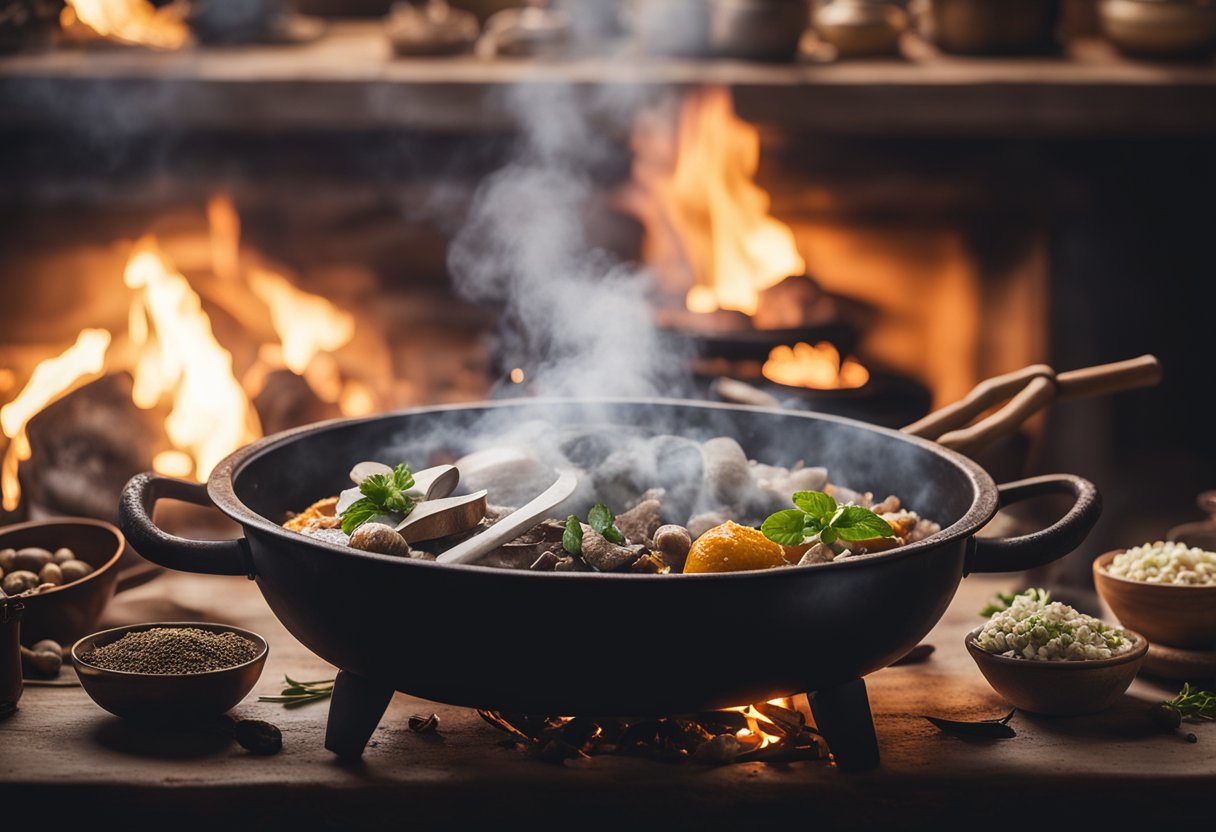
Updated On: April 23, 2024 by Maha Yassin
Culinary alchemy is at the heart of the transformative experiences we create in the kitchen. By merging time-honoured techniques with modern innovation, gastronomy brings a touch of magic to the culinary world. This symbiotic relationship between ancient culinary practices and the forefront of food science elevates the simple act of cooking to an art form, where every ingredient has the potential to become part of an extraordinary tapestry of taste.
This journey through culinary alchemy illuminates the principles that govern how we transform raw ingredients into sumptuous meals. The alchemists of the kitchen harness the power of elements like fire and water to unlock flavours and textures. We explore the multifaceted realm of taste and how the delicate interplay of seasoning builds the foundation of flavour. The sciences of chemistry and nutrition interface to not only enhance the sensory appeal of our dishes but also to consider the health implications of our gastronomic choices.
The Essence of Culinary Alchemy

Culinary alchemy bridges ancient traditions and modern gastronomy, marrying the science of chemistry with the artistry of cooking. It’s an exploration of the transformative power of cooking techniques on ingredients.
Understanding Culinary Alchemy
Culinary alchemy is more than mere cooking; it’s a thoughtful application of scientific principles to enhance food’s flavours, textures, and aromas. We delve into the essence of ingredients, using various techniques to unlock new taste dimensions. At its core, culinary alchemy views the kitchen as a laboratory where every ingredient has the potential to be transformed into something extraordinary.
For us, the process is both artistic and scientific. Like the chemists of old, we experiment with elements—heat, time, pressure—to catalyse reactions within food. It’s a creative pursuit where our in-depth knowledge of the science behind traditional cooking methods elevates the dining experience to an art form. Culinary alchemy aims to create visually stunning dishes and invoke an experience that titillates the senses and celebrates the inherent magic found within the culinary arts.
Science Meets Tradition: Cooking Methods Explored
In this exploration, we uncover the scientific principles that underpin time-honoured culinary techniques. From the transformative effects of heat to the meticulous control of temperature, these methods showcase a harmonious blend of science and tradition.
Roasting and Baking
Roasting and baking are quintessential techniques in both traditional and contemporary cooking. These methods use dry heat to induce complex chemical reactions within food, such as the Maillard reaction, which enhances flavour through browning. Baking bread, for instance, involves a precise interplay of temperature and time, allowing yeast to ferment and dough to rise, creating a tender crumb and crusty exterior. Roasting meat transforms tough collagen into tender gelatine, exemplifying how slow cooking can alter protein structures for optimal texture.
Frying Techniques
Frying, whether deep or shallow, is governed by the science of heat transfer through oil. Oil’s higher boiling point compared to water enables ingredients, like potatoes for chips, to cook quickly and develop a crispy exterior. This method also causes water within the food to evaporate while heat triggers the Maillard reaction, creating distinctive golden-brown colours and rich flavours.
Moist Cooking: Simmering, Boiling, and Steaming
Moist cooking methods, such as simmering, boiling, and steaming, utilise water or steam to cook food gently. Boiling pasta in water, for example, softens starches, rendering them edible and palatable. Steaming preserves more of the food’s nutrients than boiling or frying, as there is minimal leaching into cooking liquids. The gentle heat of simmering is ideal for coalescing flavours in stews and broths.
Sous Vide: Precision and Temperature Control
Sous vide, translating to ‘under vacuum’, is the confluence of precision and control in cooking. Foods are vacuum-sealed and submerged in a water bath at a precisely controlled temperature, as described in The Science Behind Sous Vide Cooking. This method allows for unparalleled consistency, as proteins like fish or steak can be cooked to the exact level of doneness without overcooking, maintaining moisture and enhancing texture and flavour.
Ingredients: The Building Blocks of Flavour
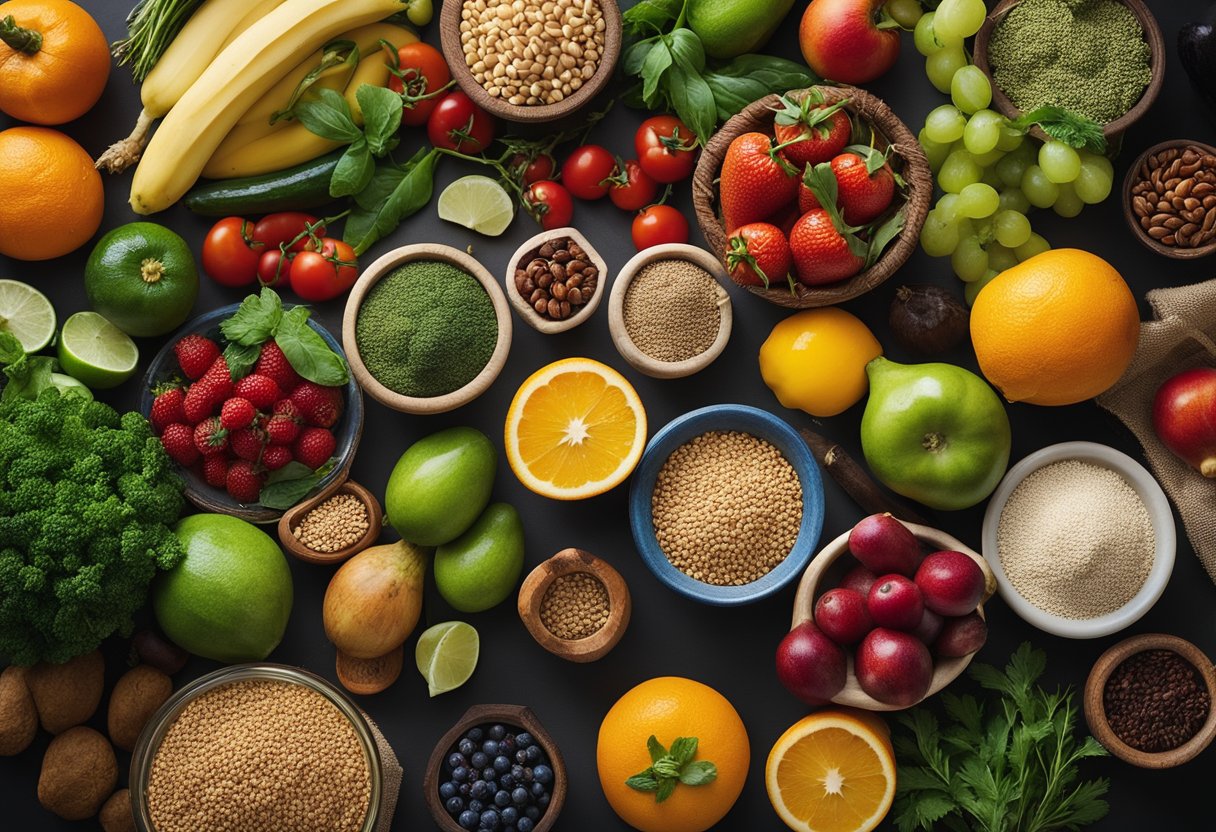
Our exploration of culinary alchemy begins at the core of all cooking: the ingredients. These foundational elements construct the rich tapestry of flavour in every dish we create.
Vegetables and Fruits
Vegetables provide a broad spectrum of flavours and textures, from the earthy notes of root vegetables like carrots and parsnips to the fresh, green taste of leafy vegetables like spinach. Fruits, like apples and berries, contribute natural sweetness and acidity, which can balance or enhance different flavours within a dish. The strategic selection of these items can lift a simple meal to one of complexity and depth.
- Carrots: Sweet and earthy
- Spinach: Mild and slightly bitter
- Apples: Sweet with a hint of acidity
- Berries: Sweet and tangy
Herbs, Spices, and Aromatics
Herbs and spices are the essence of culinary alchemy, infusing dishes with various aromas and tastes. Aromatic ingredients like garlic and onion lay a flavour foundation that the potent nature of spices such as cumin and cinnamon can transform. Meanwhile, herbs like basil and rosemary add a fresh vibrancy that elevates a dish’s overall flavour.
- Garlic: Pungent and spicy
- Onion: Sharp yet sweet
- Cumin: Warm and earthy
- Cinnamon: Sweet and woody
- Basil: Sweet and peppery
- Rosemary: Piney with a hint of lemon
Incorporating these components thoughtfully is vital to mastering flavour delicacies within traditional cooking methods.
Taste and Flavour Profiles
When we discuss the culinary arts, understanding taste and flavour profiles is fundamental. These concepts are pivotal in creating dishes that provide a harmonious eating experience.
Balancing the Five Tastes
The art of cooking hinges on our palate’s ability to perceive five primary tastes: sweet, sour, salty, bitter, and umami. Each taste has a crucial role in how we experience our food. Sweetness often brings a pleasing and energy-rich sensation, while sourness can provide a refreshing, acidic contrast. Saltiness enhances other flavours, and bitterness can offer depth and complexity. Lastly, umami, known as the savoury taste, imparts a profound sense of richness and fullness. Balanced flavour profiles are central to mastering culinary techniques, and the interplay between these tastes can elevate a simple meal to a memorable culinary experience.
- Sweet: Often derived from sugars, syrups, and fruits.
- Sour: Introduced via citrus, vinegar, and some dairy-like yoghurt.
- Salty: Found in sea salt, cheeses, and soy sauce.
- Bitter: Present in dark chocolate, leafy greens, and specific coffee.
- Umami: Associated with aged cheeses, meats, and mushrooms.
Flavour Pairing Principles
Understanding how to pair flavours is akin to composing a symphony where each note complements the others. A fundamental principle is combining ingredients that share aromatic compounds, enhancing the overall flavour of a dish. To achieve a well-rounded dish, aromatic herbs and spices are used judiciously. Sour notes from citrus can refresh the palate, while the complexity of umami can be introduced by carefully adding mushrooms or ripe tomatoes. Integrating contrasting flavours requires knowledge and practice, and flavour pairing principles guide us in creating nourishing and exciting dishes to the palate.
- Complementary flavours: Tomatoes and basil, pork and apple.
- Contrasting pairs: Dark chocolate and chilli, blue cheese and pears.
Chemistry in the Kitchen: Transforming Textures

In our quest to understand the magic of cooking, we recognise that chemistry plays a pivotal role, especially when transforming textures. We can turn simple ingredients into complex and satisfying sensory experiences with our grasp of scientific principles.
Emulsification and Molecular Gastronomy
When we talk about emulsification, we’re delving into a process that allows us to merge two substances that typically don’t mix, like oil and water. We create stable mixtures through emulsifiers, such as egg yolks or mustard, resulting in creamy and consistent textures essential in dishes like mayonnaise or vinaigrettes.
Molecular gastronomy takes our cooking to another level, employing techniques like spherification to encapsulate flavours in delicate gel spheres, causing a burst of taste upon consumption. By utilising natural gelling agents like sodium alginate, we can manipulate and redefine the very structure of our ingredients.
Foams, too, are a triumph of molecular gastronomy, adding lightness and airiness to dishes. Using substances like lecithin, we can create foams from various liquids, introducing new textures to tantalise the palate without altering the fundamental flavour profiles of our dishes.
As we utilise these methods, we carefully balance the textures to achieve the desired gustatory effect, ensuring that each component on the plate provides taste and an intriguing textural contrast. By embracing these culinary techniques, we transform our kitchens into laboratories where the ingenuity of science enhances the joy of eating.
The Art of Seasoning: Salt, Acidity, and Sweetness

We carefully consider the balance of salt, acidity, and sweetness to enhance the natural essence of each ingredient and transform dishes into something extraordinary.
The Impact of pH on cooking
Understanding pH’s role is essential for many recipes’ success in our kitchens. Acidity, measured on a pH scale, affects the texture, colour, and flavour of the food we prepare. Carefully adding acidic components like vinegar or citrus can brighten a dish’s flavour, while neutralising too much acidity is equally important.
Utilising salt is not solely for savouriness but also to counterbalance acidity and sweetness, achieving a perfect harmonic state. Seasoning with salt enhances the natural flavours of food and can even reduce the need for additional fat and sugar, contributing positively to the dish’s nutrition.
Conversely, a touch of sweetness can round off the sharp edges of too much salt or acidity. Sweetness doesn’t always come from sugar; the natural sugars within an ingredient often need a moment over the fire to bloom.
By mastering the relationships between salt, sweetness, and acidity, we ensure each dish presents a profile that is robust and pleasing to any palate, providing flavour and a reflection of culinary skill and science.
Fermentation and Preservation
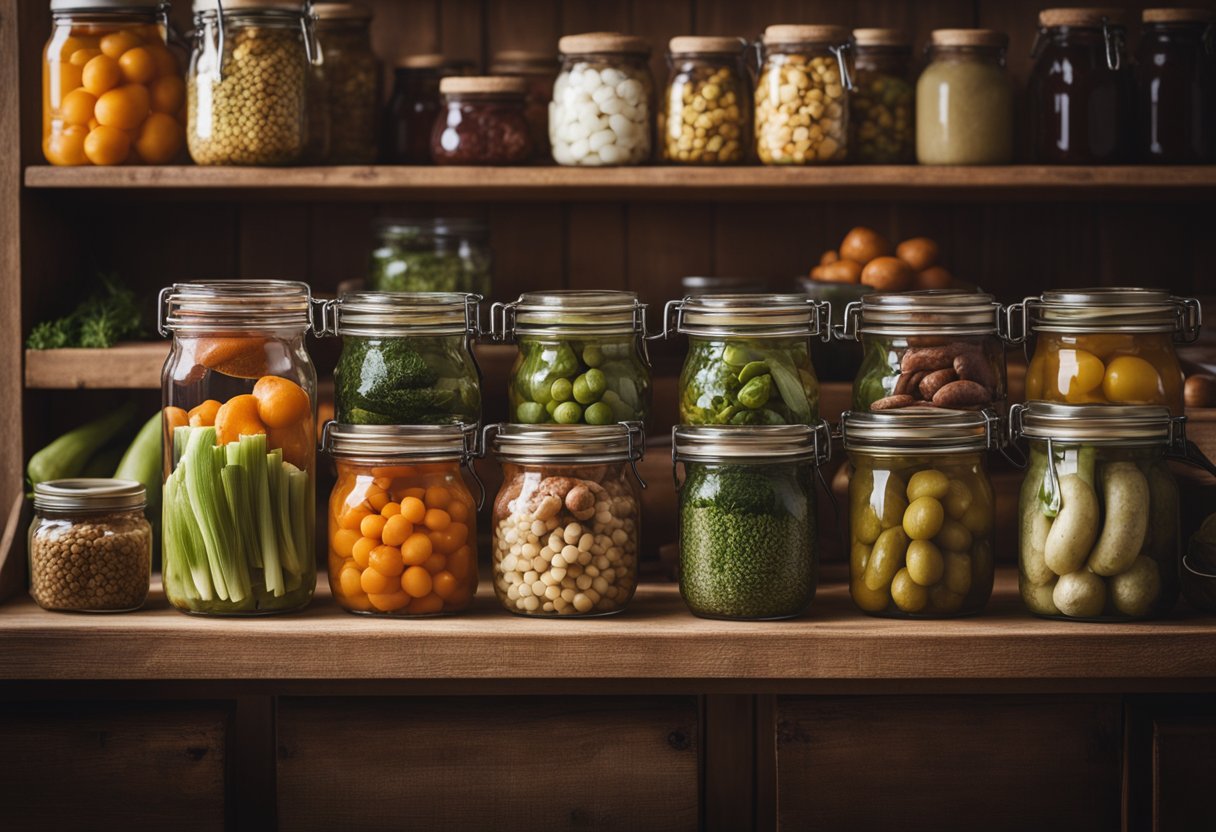
In this section, we explore the transformative processes of fermentation and the age-old art of preservation, each playing a pivotal role in enhancing flavour and extending the shelf life of foods.
Cultures and Carbohydrates: The Science Behind Fermentation
Through fermentation, we harness the power of microorganisms like yeast and lactic acid bacteria to convert carbohydrates into alcohol, gases, or acids. This biochemical reaction not only adds unique flavours but also preserves the food. Sauerkraut, an iconic fermented cabbage dish, exemplifies this process. The traditional ingredients harmonise with the naturally present bacteria to create a distinctive tangy taste. Similarly, kombucha, a fermented tea beverage, sees yeast transform sugar into alcohol and acetic acid, infusing it with its characteristic fizz and sourness.
Time-Honoured Preservation Techniques: Pickling and Curing
Pickling and curing are time-honoured preservation techniques involving foods in solutions such as brine or vinegar. They inhibit spoilage by creating an environment inhospitable to the bacteria that cause food decomposition. Pickling can preserve various traditional ingredients, extending their usability beyond their fresh form. The resulting products are not only safe for extended storage but often acquire an enhanced, piquant flavour that is celebrated in cuisines around the world.
Health, Nutrition, and Culinary Choices
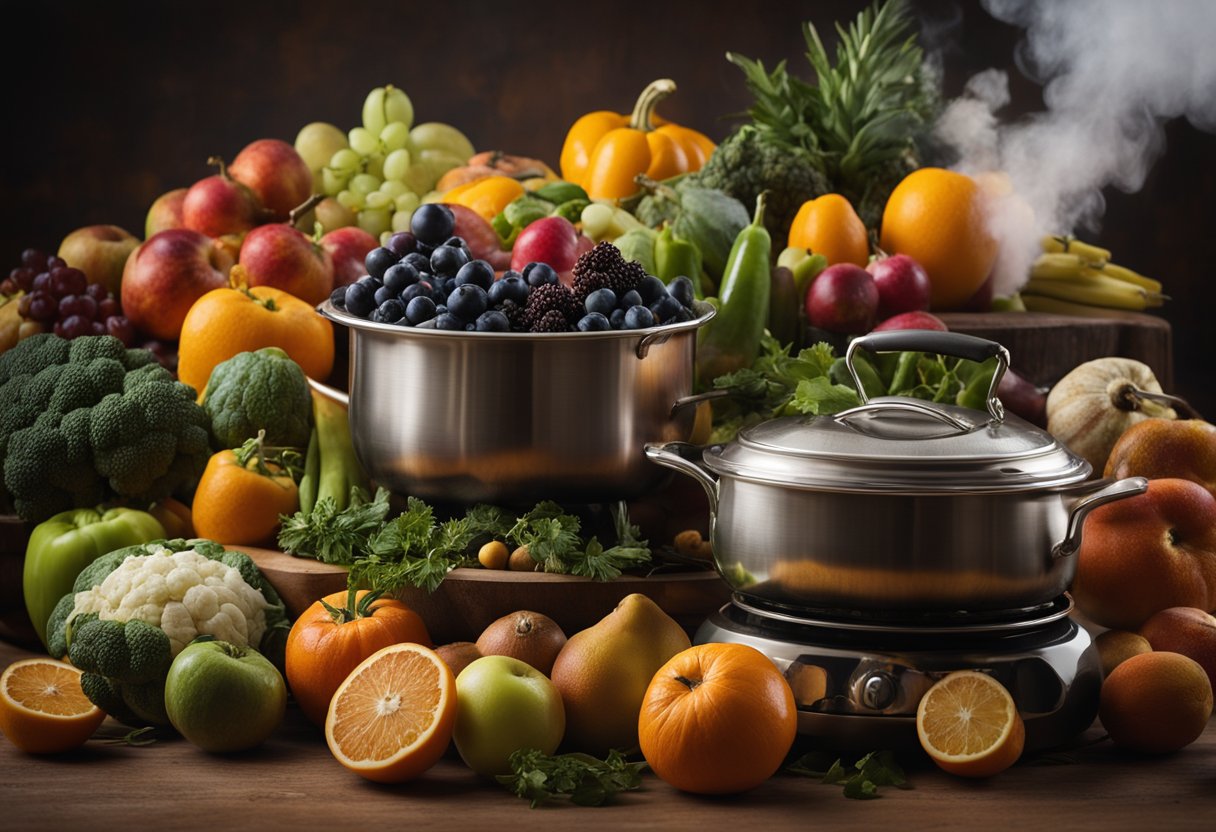
In culinary practices, the interaction between health, nutrition, and gastronomy is pivotal in approaching food. We understand that the choices we make in the kitchen significantly impact our overall well-being.
Balancing Diet and Flavour
When considering diet and flavour, it’s essential to acknowledge that nutritious food can also be delicious. It takes skill and understanding to strike a balance between these elements. Fresh ingredients are at the heart of this balance, bringing nutritional value and vibrant flavours. We utilise a variety of cooking techniques to preserve and enhance these qualities.
- Grilling can enhance the natural taste of food without adding extra fat.
- Steaming retains vitamins and minerals, which may be lost in other cooking methods.
- Slow cooking allows for the deep integration of flavours, making the most of each ingredient.
Our diet should be considered a kaleidoscope, with a spectrum of colourful fruits, vegetables, grains, and proteins. We don’t just aim for a plate that pleases the eye; we ensure that it nourishes the body, too:
Nutritional Value: Every dish should provide an array of nutrients. This means incorporating a variety of food groups to meet our body’s needs.
- Carbohydrates offer energy and should be sourced from whole grains for maximum benefit.
- Proteins are crucial for repair and growth and should be lean where possible.
- Fats are necessary for health but should be consumed in moderation, favouring sources like olive oil or nuts.
Quality and Health: The quality of our chosen ingredients directly affects our health. This involves selecting:
- Organic produce, where possible, to limit exposure to pesticides.
- Seasonal and locally sourced ingredients to ensure freshness and support local economies.
In our culinary choices, understanding the link between the food we prepare and its effect on our health empowers us to make informed decisions. Through knowledgeable selections and cooking techniques, we craft dishes that support a healthy lifestyle without compromising taste.
Culinary Presentation: The Art of Plating
In the realm of haute cuisine, the presentation of a dish is as critical as its taste and aroma. Our visual perception influences how we experience food even before the first bite. Crafting a visually stunning plate is an art that requires a deep understanding of the interplay between colour, form, and texture.
Visual Appeal and Sensory Experience
Plating is chiefly about balancing the visual elements to create a meal that is appealing to the eyes. When we execute proper plating techniques, we’re not merely arranging food on a plate; we’re composing an artwork that evokes emotions and creates a multisensory experience. Key factors include:
- Presentation: A well-presented dish hints at the care and precision taken during its creation, suggesting that equal attention has been paid to flavour and texture.
- Texture: Varying textures can add an exciting dimension to a dish, contributing to the overall mouthfeel and satisfaction.
- Appearance: Crisp edges, vibrant colours, and thoughtful placement can heighten anticipation and amplify the enjoyment of a meal.
- Artistic: An artistic approach to plating can differentiate a dining experience, turning an ordinary meal into a memorable event.
We foster an intimate connection between the diner and the dish by weaving together these elements. As chefs and gastronomes, we aim to harness these culinary techniques to deliver a complete sensory package that pleases the palate as much as it delights the eye.
Culinary Innovation and Technology
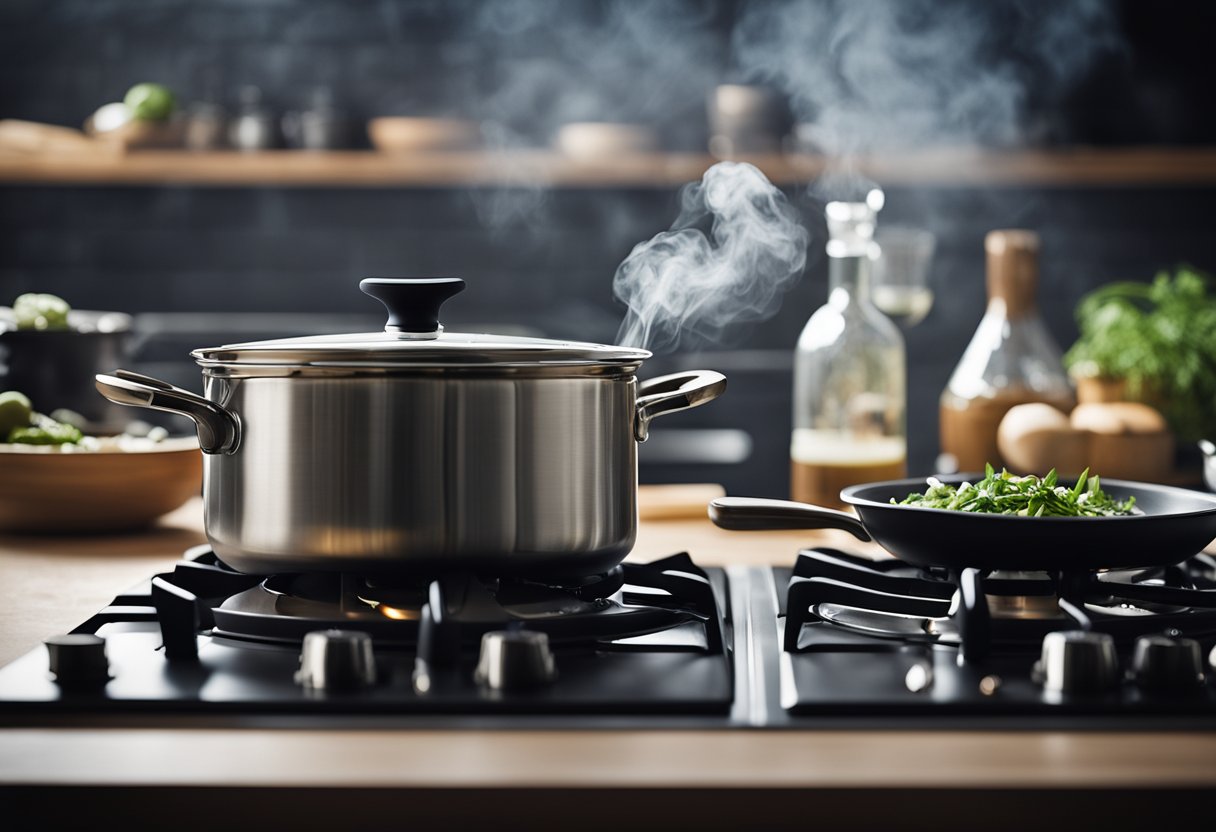
We are witnessing a revolution in the kitchen as technological advancements converge with culinary artistry. This synergistic relationship is yielding groundbreaking tools and techniques that are redefining the realm of gastronomy.
Cutting-Edge Tools and Techniques
The application of innovation in the culinary world has led to the developing sophisticated tools and culinary techniques. Liquid nitrogen, for example, has become a staple in modernist cuisine for its ability to flash-freeze ingredients, creating unique textures and enhancing natural flavours.
Sustainability is also a driving force in culinary technology, with emerging tools designed to reduce waste and the carbon footprint of culinary operations. Equipment such as energy-efficient induction cooktops conserve energy and provide precise temperature control, allowing chefs to execute their dishes with exceptional accuracy.
The advent of culinary alchemy has redefined what is possible in food preparation. Utilising technology such as sous vide machines, chefs can now cook ingredients at specific temperatures, achieving perfect doneness and enhancing the ingredient’s innate qualities.
The fusion of technology and gastronomy has sparked a renaissance in the kitchen. It empowers us to explore uncharted territories of taste and texture while respecting and promoting sustainability throughout the culinary landscape.

FAQs
In this section, we cover some of the most pressing queries about intertwining science and traditional cooking practices, often referred to as culinary alchemy.
What techniques do molecular gastronomy chefs employ in their culinary processes?
Molecular gastronomy chefs utilise various innovative techniques such as spherification, which transforms liquids into spheres, and sous-vide, a method of cooking ingredients at precise temperatures in a vacuum-sealed bag.
Can you trace the origins and evolution of molecular gastronomy?
Molecular gastronomy originated in the late 20th century when its principles were first articulated by scientists interested in the physical and chemical processes in cooking. Over time, this field has evolved, integrating science and culinary art to push the boundaries of traditional cuisine.
How does molecular gastronomy enhance sustainability within the food industry?
Molecular gastronomy can promote sustainability by reducing food waste by using every part of an ingredient and encouraging the exploration of alternative food sources and methods with a lower environmental impact.
In which year was the concept of molecular gastronomy first introduced?
The term’ molecular gastronomy’ was coined in 1988 by Hervé This and Nicholas Kurti, marking the official birth of this interdisciplinary field that blends gastronomy with scientific research.
Could you explain the scientific principles that underpin traditional cooking methods?
Traditional cooking methods are governed by scientific principles such as the Maillard reaction, which causes browning and flavour development in grilled or baked foods, and denaturation, which refers to the structural change of proteins during processes like egg cooking.
How does culinary alchemy differ from standard cooking practices?
Culinary alchemy, or molecular gastronomy, differs from standard cooking practices in its precise control over chemical and physical transformations, creating textures, flavours, and presentations often unimaginable in traditional cuisine.






